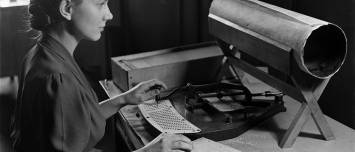About
product quality
Articles Related
Japanese
In Japanese culture, there are two types of quality:
- atarimae hinshitsu - things will work as they are supposed to (e.g. a pen will write)
- and miryokuteki hinshitsu - 魅力的品質 - things should have an aesthetic quality (e.g. a pen will write in a way that is pleasing to the writer, and leave behind ink that is pleasing to the reader)
Eight dimensions of quality
Eight dimensions of product quality management can be used at a strategic level to analyze quality characteristics.
- Performance : measurable attributes of the product's primary operating characteristics
- Features: Additional characteristics (over the performance one) that enhance the appeal of the product or service to the user
- Reliability: probability that a product will not fail within a specific time period (more relevant to durable goods than to products and services that are consumed instantly)
- Conformance: to standard
- Durability: length of a product’s life
- Serviceability: time back to normal when product breaks
- Aesthetics: subjective dimension indicating the kind of response a user has to a product.
- Perceived Quality: Reputation is the primary stuff of perceived quality.
Performance
Performance refers to a product's primary operating characteristics.
This dimension of quality involves measurable attributes; brands can usually be ranked objectively on individual aspects of performance.
Overall performance rankings, however, are more difficult to develop, especially when they involve benefits that not every consumer needs.
The line separating primary performance characteristics from secondary features is often difficult to draw
Performance may be closely related to reliability. For instance, a product specification may define parameters for up-time, or acceptable failure rates.
Features
Features are additional characteristics that enhance the appeal of the product or service to the user.
Features are the “bells and whistles” of products and services, those characteristics that supplement their basic functioning. Examples include free drinks on a plane, permanent-press cycles on a washing machine, and automatic tuners on a color television set.
The line separating primary performance characteristics from secondary features is often difficult to draw
Reliability
Reliability: Reliability is the likelihood/probability that a product will not fail within a specific time period.
Key element for users who need the product to work without fail.
Common measures of reliability are:
- the mean time to first failure,
- the mean time between failures,
- the failure rate per unit time.
Because these measures require a product to be in use for a specified period, they are more relevant to durable goods than to products and services that are consumed instantly.
Farmers are especially sensitive to downtime during the short harvest season. Reliable equipment can mean the difference between a good year and spoiled crops
Reliability may be closely related to performance. For instance, a product specification may define parameters for up-time, or acceptable failure rates.
Durability and reliability are closely linked. A product that often fails is likely to be scrapped earlier than one that is more reliable;
Conformance
Conformance: Conformance is the precision with which the product or service meets the specified standards.
Durability
Durability measures the length of a product’s life.
Technically, durability can be defined as the amount of use one gets from a product before it deteriorates.
When the product can be repaired, estimating durability is more complicated. The item will be used until it is no longer economical to operate it. This happens when the repair rate and the associated costs increase significantly.
Durability and reliability are closely linked. A product that often fails is likely to be scrapped earlier than one that is more reliable;
Serviceability
Serviceability is the speed with which the product can be put into service when it breaks down, as well as the competence and the behavior of the service person.
Serviceability involves:
- the consumer's ease of obtaining repair service (example: access to service centers and/or ease of self-service),
- the responsiveness of service personnel (example: ease of getting an appointment, willingness of repair personnel to listen to the customer),
- the reliability of service (example: whether the service is performed right the first time).
Customers may remain dissatisfied even after completion of repairs. How these complaints are handled is important to a company's reputation for quality and service.
Aesthetics
The aesthetic properties of a product contribute to the identity of a company or a brand.
Aesthetics refers to how the product looks, feels, sounds, tastes, or smells.
It is clearly a matter of personal judgement and a reflection of individual preference.
Aesthetics is the subjective dimension indicating the kind of response a user has to a product. It represents the individual’s personal preference.
Perceived Quality
Perceived Quality is the quality attributed to a good or service based on indirect measures.
